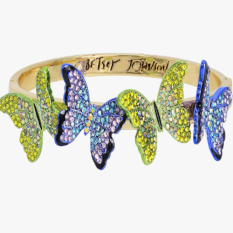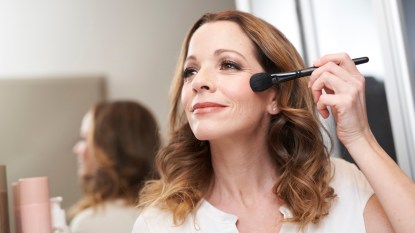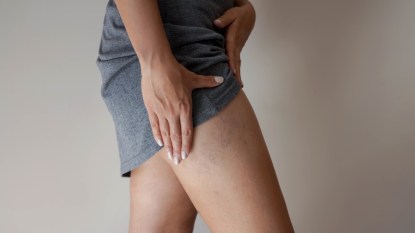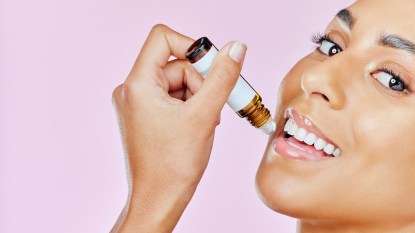Why Women Over 50 Are Choosing ‘Dry Oils’ to Hydrate and Beautify Their Skin + 3 Top Picks Under $20
Aestheticians weigh in on this new trend that's inexpensive, effective and non-greasy

Argh! When your skin is feeling so parched, you just want to slather on an oil or a cream. Something rich and soothing. But as much as they hydrate your skin, these approaches also leave you feeling greasy, which can create an awkward situation at bedtime with your partner and/or pose a threat to the integrity of your pillowcase! As far as hands go, greasy lotions can be frustrating when you’ve got a lot to do and need your hands to be ready for action. That’s why we were pleased to see the latest trend in beauty for women over 50 is using dry oil for skin. While something that’s said to be both hydrating and dry may sound like an oxymoron, It’s actually the best of both worlds.
What exactly is a dry oil?
The use of cosmetic oils in beauty has been around for centuries but only recently has exploded into a $4 billion dollar industry. Even though we think of “oil” as being one thing, “oils can come in different textures and have different properties that you can harness in your beauty routine,” explains beauty influencer and aesthetician Cassandra Bankson. And the varieties that qualify as dry oils, meaning that they ‘dry’ immediately once absorbed into the skin or hair, are the ones that are flying off store shelves, which only makes sense for the reasons we just described.
Dry oil “provides quick absorption to the skin and hair without leaving an oily or greasy residue,” explains Erica Marie Gatt, aesthetician and founder of EM Skin. And the fact that dry oil doesn’t feel oily to the touch is just one of its many perks. “When you apply it, you will notice a boost of hydration and a reduction in redness and inflammation, while also protecting the skin from free radical damage,” affirms Gatt.
That’s because dry oils are loaded with essential fatty acids, which research has shown helps skin maintain its integrity by nourishing skin cells’ natural lipids. Fatty acids are also integral in tissue and cell regeneration. Unlike thicker, heavier oils that act as a barrier or provide a ‘slip’ effect (think olive, castor oil and coconut oil), in the case of a dry oil, “your skin is using and absorbing all of its benefits instead of it sitting on top of the skin and serving more of a functional purpose,” says Christina Uzzardi, aesthetician and founder of Cheeks+Co.
What are some examples of dry oil for skin?
- Jojoba Oil: This oil closely resembles the skin’s natural sebum, making it an excellent moisturizer. It’s non-comedogenic and can be used on both the face and body. It helps balance oil production, making it suitable for all skin types.
- Argan Oil: Rich in vitamin E and fatty acids, argan oil provides hydration and helps improve skin elasticity.
- Grapeseed Oil: This oil is chock full of antioxidants and is easily absorbed by the skin. It can help tighten and tone the skin, making it perfect for women over 50.
- Rosehip Seed Oil: High in vitamins A and C this oil is known for its ability to fade scars, reduce fine lines, and improve skin texture. It’s also super moisturizing.
- Sunflower Oil: Its vitamin E content helps moisturize the skin without clogging pores.
What’s the difference between wet oil and dry oil for skin?
The main difference between dry and regular oils is the “thickness and grease,” explains Kristen Sgarlato, head of product development for Naturopathica skin care. “Other oils are heavier, thicker and leave behind a residue when applied to the skin, whereas dry oils are lighter, absorb more quickly and don’t leave behind a greasy residue, leaving skin soft but dry to the touch,” she says.
While thicker oils that feel distinctly greasy to the touch, like olive and coconut oil, are typically used as ‘carrier oils’ and mixed with other ingredients, dry oils can stand out independently.
The benefits of dry oil for the skin of women over 50
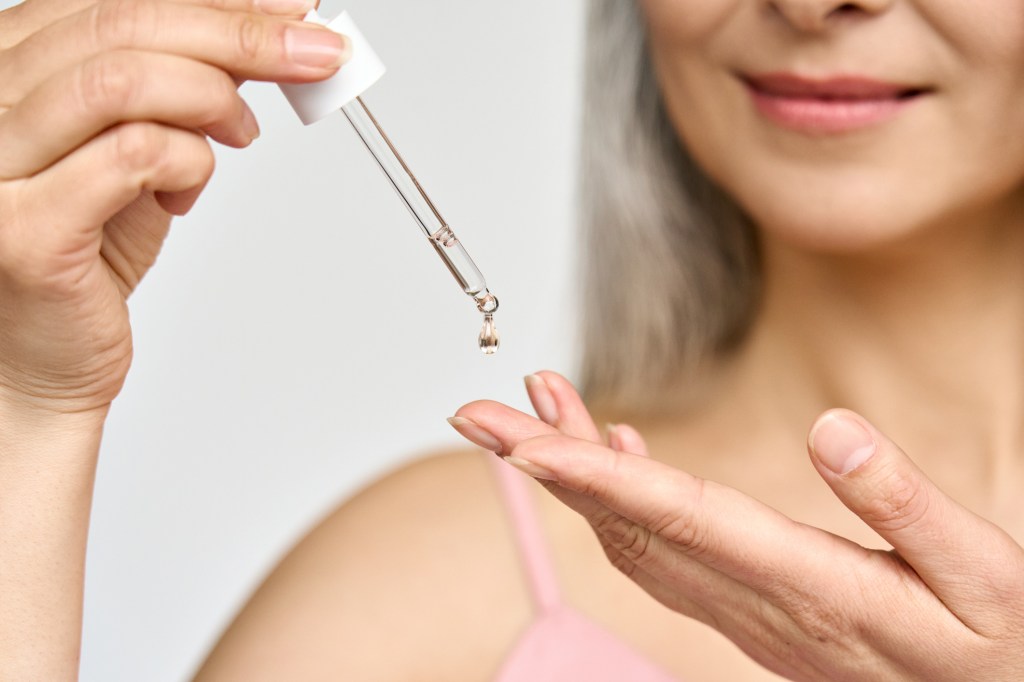
Dry oils can be used for a quick shot of moisture when needed or layered and applied repeatedly for deeper hydration, especially during the dry winter months. And because they are primarily natural, they can nourish and hydrate from head to toe and be used on any skin type — even sensitive or acne-prone skin. What else can dry oils do:
1. Dry oil locks in moisture
From drying winter weather to summer’ s hot sun, no matter the season, our skin gets depleted of much-needed moisture, vitamin-packed dry oils can add hydration back in — and lock it in — so it doesn’t escape. One study even found that sunflower oil improved hydration more effectively than olive oil — grease-free!
2. It acts as a barrier against our skin and the environment
Dry oils like avocado and sunflower are known to nourish skin’s lipids to keep them strong. This means they can better fight off environmental triggers like severe weather, windburn and dry air. Plus, they transport essential fatty acids and some antioxidants directly to skin cells, aiding overall skin health, resilience and support against damage. Plus avocado oil has been shown to promote collagen synthesis to help heal, firm and smooth skin.
3. It can combat sun spots and uneven skin
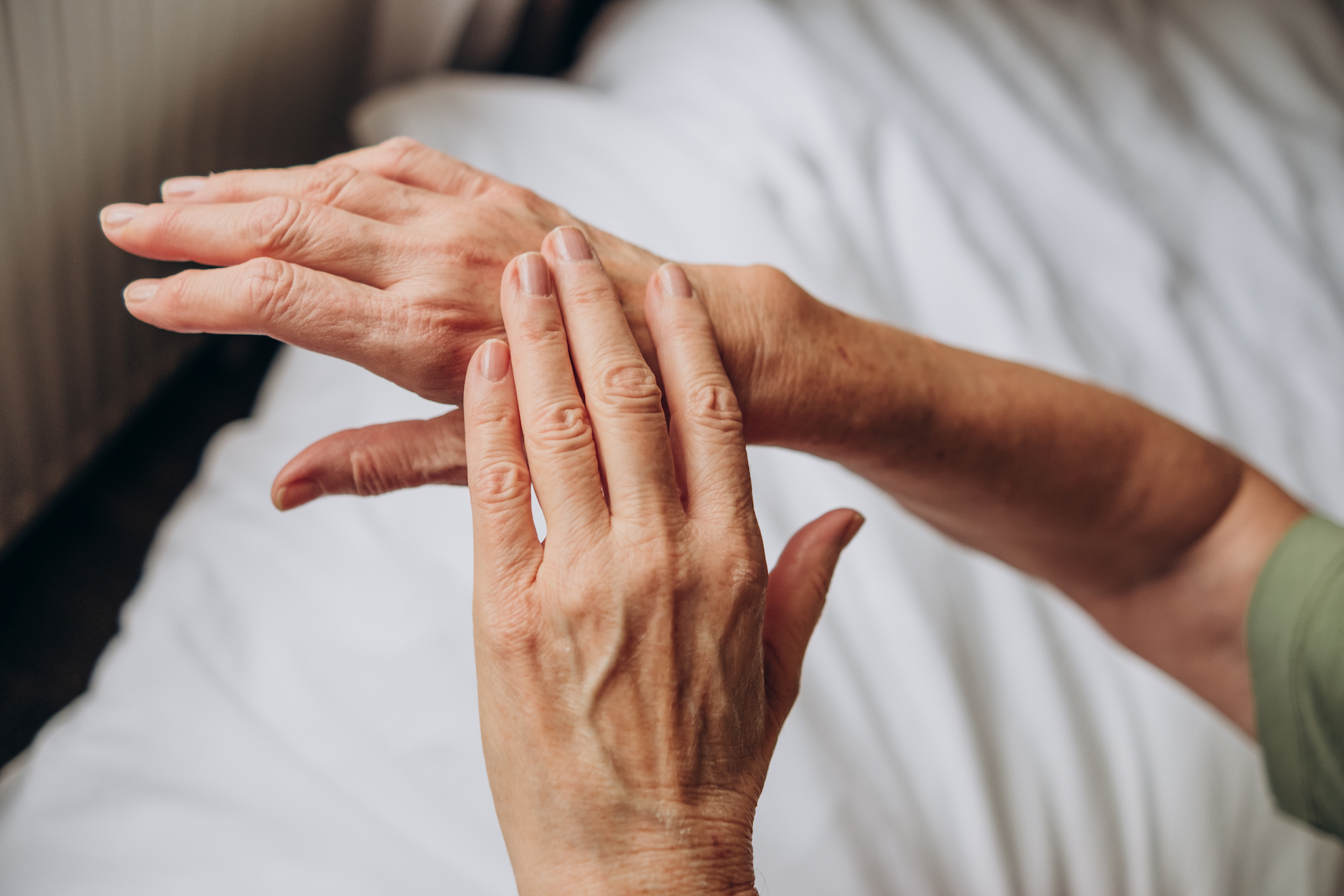
Besides its hydrating and anti-aging benefits, rosehip oil, in particular, has been shown to combat melasma, hyperpigmentation, acne scars and dark spots on the skin because it’s a natural source of vitamin C. (Click here for more on the benefits of rosehip oil for skin.)
4. It can protect you from skin cancer and sun damage
Grapeseed oil — just like it sounds — is a dry oil extracted from the seeds in grapes. Its fatty acids, vitamin E and natural phytochemicals provide a barrier of defense against the sun’s harmful rays, potentially preventing skin cancer. This protection can also fight the signs of premature aging caused by sun exposure, like fine lines and wrinkles. (Click here to learn more about the benefits of grapeseed oil for skin.)
5. It can keep breakouts at bay
Studies have found that acne-prone skin is deficient in certain fatty acids. Because dry oils are jam-packed with these compounds, adding one to your skincare routine can curb breakouts before they start.
How do you use dry oil for skin?
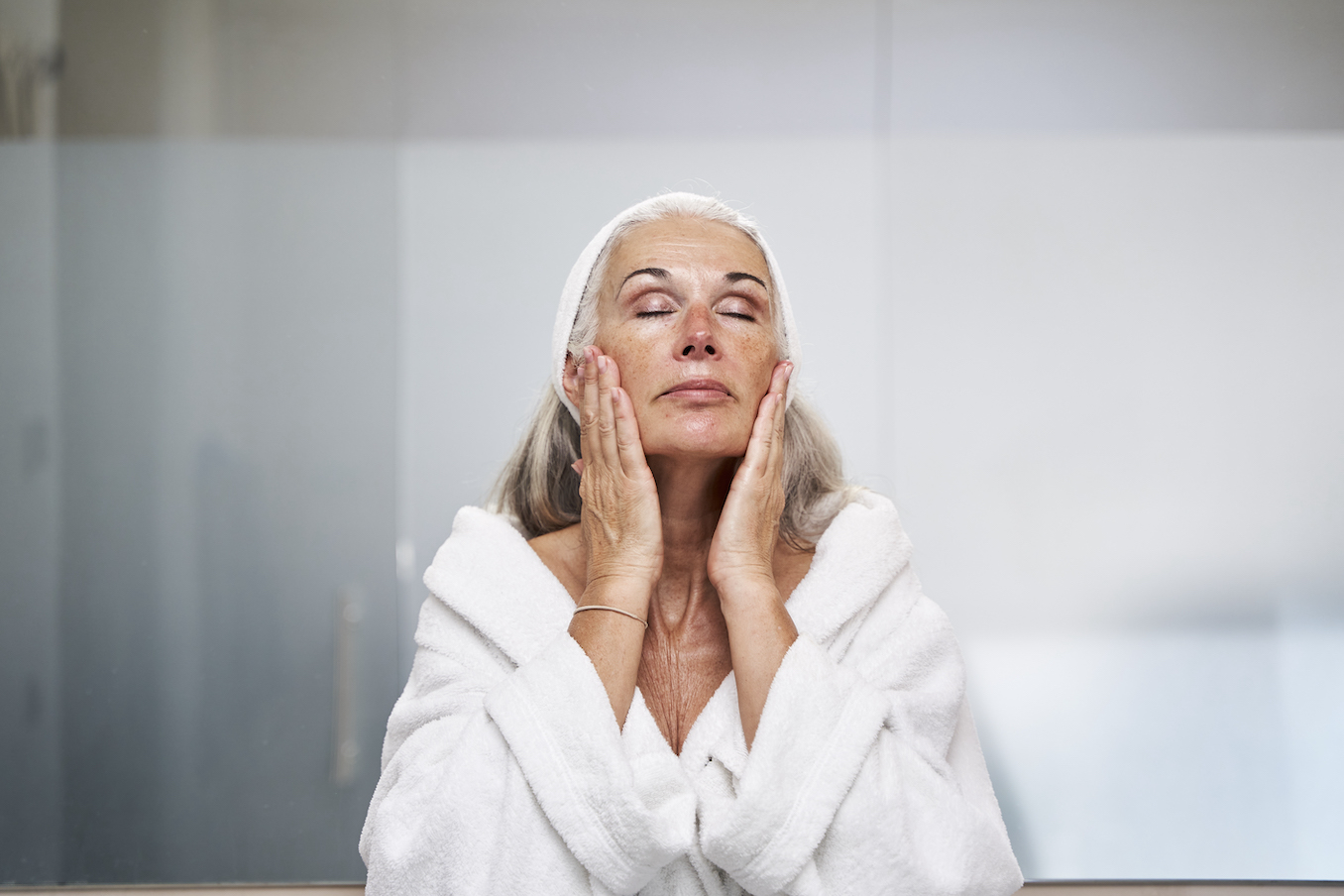
“Dry oils are best used as a finishing step, locking in all other water-based and moisturizing products because water and oils repel each other,” advises Bankson.
Bankson suggests sticking to your normal skincare routine, topped off with moisturizer — except adding the multi-beneficial oil as the last step. “Take a few drops of dry oil into your hands, rub them together and pat or massage gently onto the skin using a circular motion. You can go directly to bed without worrying that it will ruin your linens or even apply makeup on top of it. It can even be mixed into your foundation if you prefer.”
Related: ‘I’m a Dermatologist And Here’s Why I Tell My Patients to Use Hyaluronic Acid Daily!’
The best dry oils for skin to find in store
Dry oils can be found in health food stores in their natural form or incorporated into skincare products. We’ve selected a few you can try.
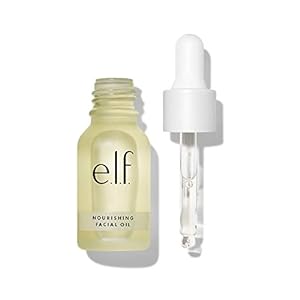
This drugstore fave, e.l.f.’s SKIN Nourishing Facial Oil, incorporates rosehip, avocado, grapeseed and jojoba oils to reap all its vitamin-packed benefits in one shot.
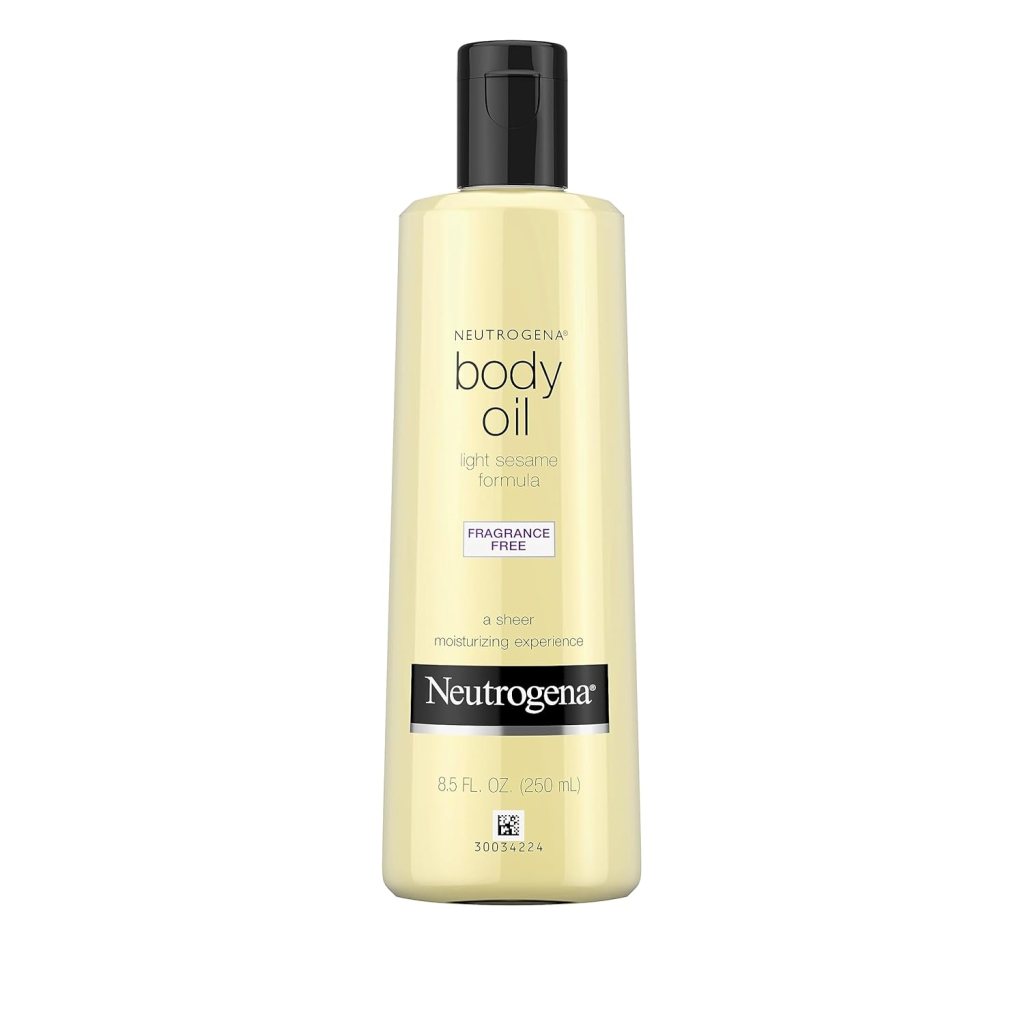
Neutrogena’s Fragrance-Free Body Oil’s Light Sesame Formula is extracted from pure white sesame seeds, an ingredient that helps skin maintain its moisture balance while leaving it with a radiant, healthy-looking glow.
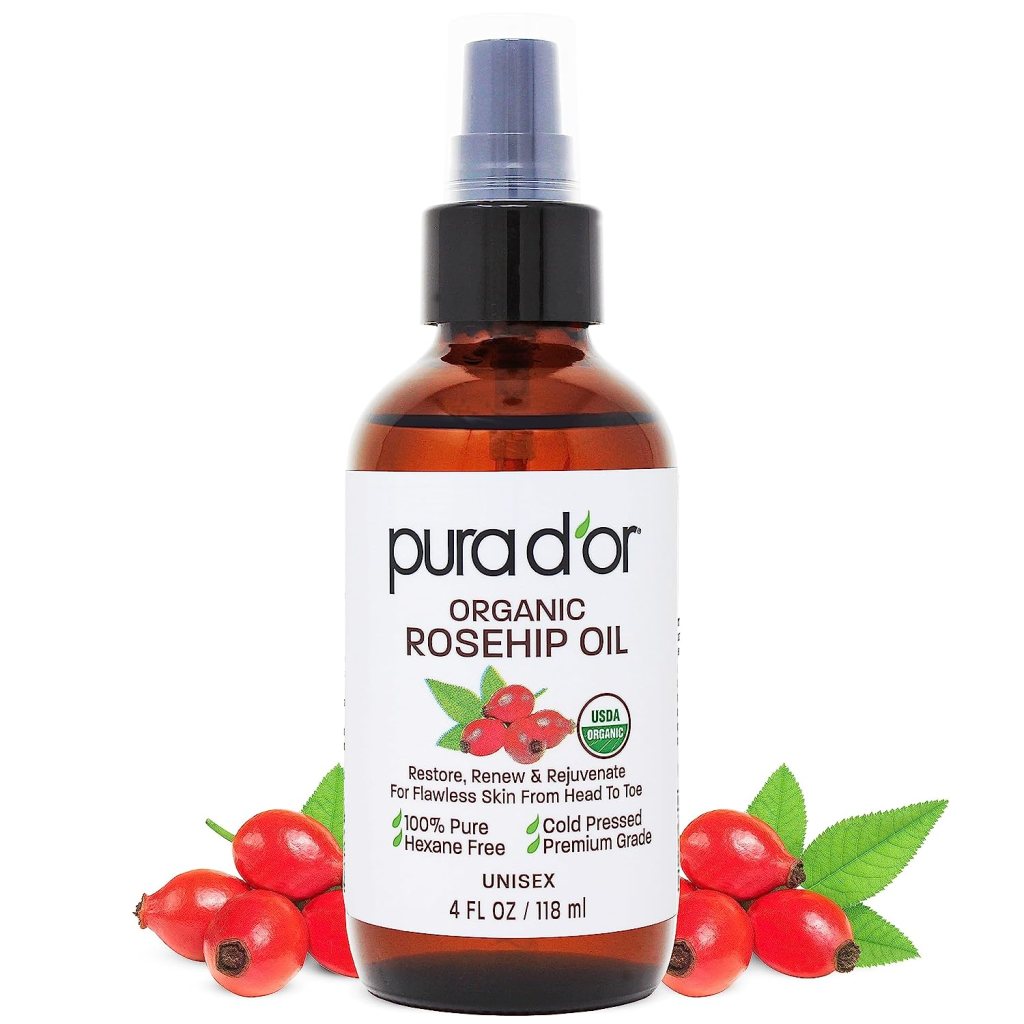
Pura D’Or Rosehip Oil is rosehip oil in its purest form, says the company, to improve collagen production and overall texture of the skin.
Are there other ways to use dry oils?
If you have some dry oil lying around, you can put it to good use by dabbing it onto ends of hair, cuticles or anywhere else you need a moisturizing boost. It can mend split ends and tame flyaway hairs without weighing it down.
Some dry oils, like avocado oil, act as a natural anti-fungal, making them ideal for a dandruff-prone scalp. The use for these oils is endless!
For more skin-related beauty tips, click through these stories:
Natural Ways To Erase Broken Blood Vessels On Your Face — Quickly and Permanently
The Best Body Butters for Soft, Smooth, Glowing Skin: Dermatologists Weigh In
What To Soak Dry, Cracked Hands In To Make Them Soft, Smooth and Beautiful Again

